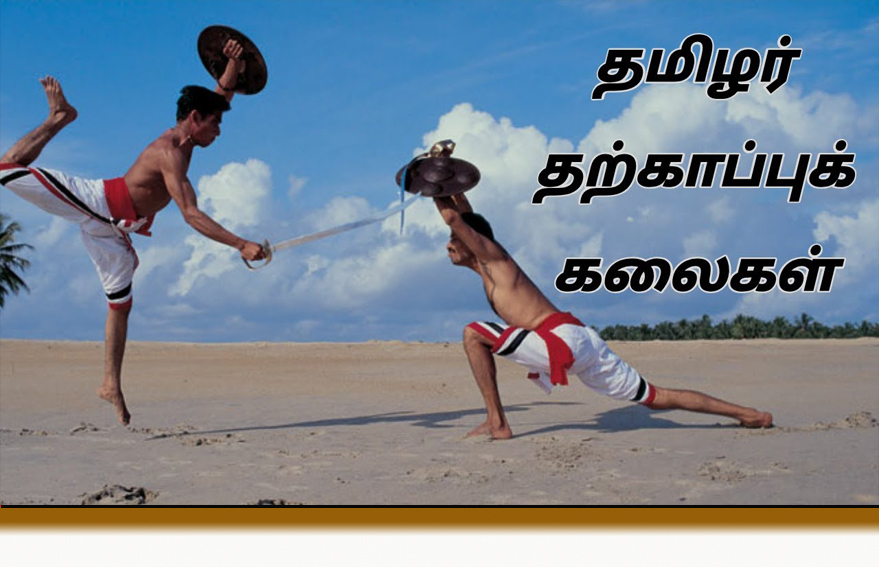

Martial Arts

Various martial arts including Adimurai, Kuttu Varisai, Varma Kalai, Silambam, Adithada, Malyutham and Kalarippayattu, are practised in Tamil Nadu and Kerala. The warm-up phase includes yoga, meditation and breathing exercises. Silambam originated in ancient Tamilakam and was patronized by the Pandyans, Cholas and Cheras, who ruled over this region. Silapathigaram, a Tamil literature from the 2nd century AD, refers to the sale of Silamabam instructions, weapons and equipment to foreign traders. Since the early Sangam age, there was a warlike culture in South India.
War was regarded as an honorable sacrifice and fallen heroes and kings were worshiped in the form of a Hero stone. Each warrior was trained in martial arts, horse riding and specialized in two of the weapons of that period Vel spear Val sword and Vil bow. Heroic martyrdom was glorified in ancient Tamil literature. The Tamil kings and warriors followed an honour code like that of Japanese Samurais and committed suicide to save the honor.
The forms of martial suicide were known as Avipalli, Thannai, Verttal, Marakkanchi, Vatakkiruttal and Punkilithu Mudiyum Maram. Avipalli was mentioned in all the works except Veera Soliyam. It was a self-sacrifice of a warrior to the goddess of war for the victory of his commander. The Tamil fighters in North-east region of Sri Lanka reflected some elements of Tamil martial traditions which included worship of fallen heroes Maaveerar Naal and practice of martial suicide. They carried a Suicide pill around their neck to escape the captivity and torture. A remarkable feature besides to their willingness to sacrifice is, that they were well organized and disciplined. It was forbidden for the rebels to consume tobaccos, alcohols, drugs and to have sexual relationship.
Traditional Weapons
The Tamil martial arts also include various types of weapons.
- Kathi – dagger/knife
- Reddai Vaal – dual sword
- Silambam – long bamboo pole
- eetti or Vel – spear
- Vil – bow
- Savuku – whip
- Soolam – trident
- Kattari – fist blade
- Maduvu – deer horns
- Tantayutam – mace
- Valari throwing – iron sickle
- Theekutchi – flaming baton
- Yeratthai Mulangkol – dual stick
- Vaal + Ketayam – sword + shield
- Kuttu Katai – spiked knuckleduster
- Veecharuval – battle Machete
- Surul Vaal – curling blade
Reference:
https://en.my-greenday.de/22216145/1/tamil-culture.html